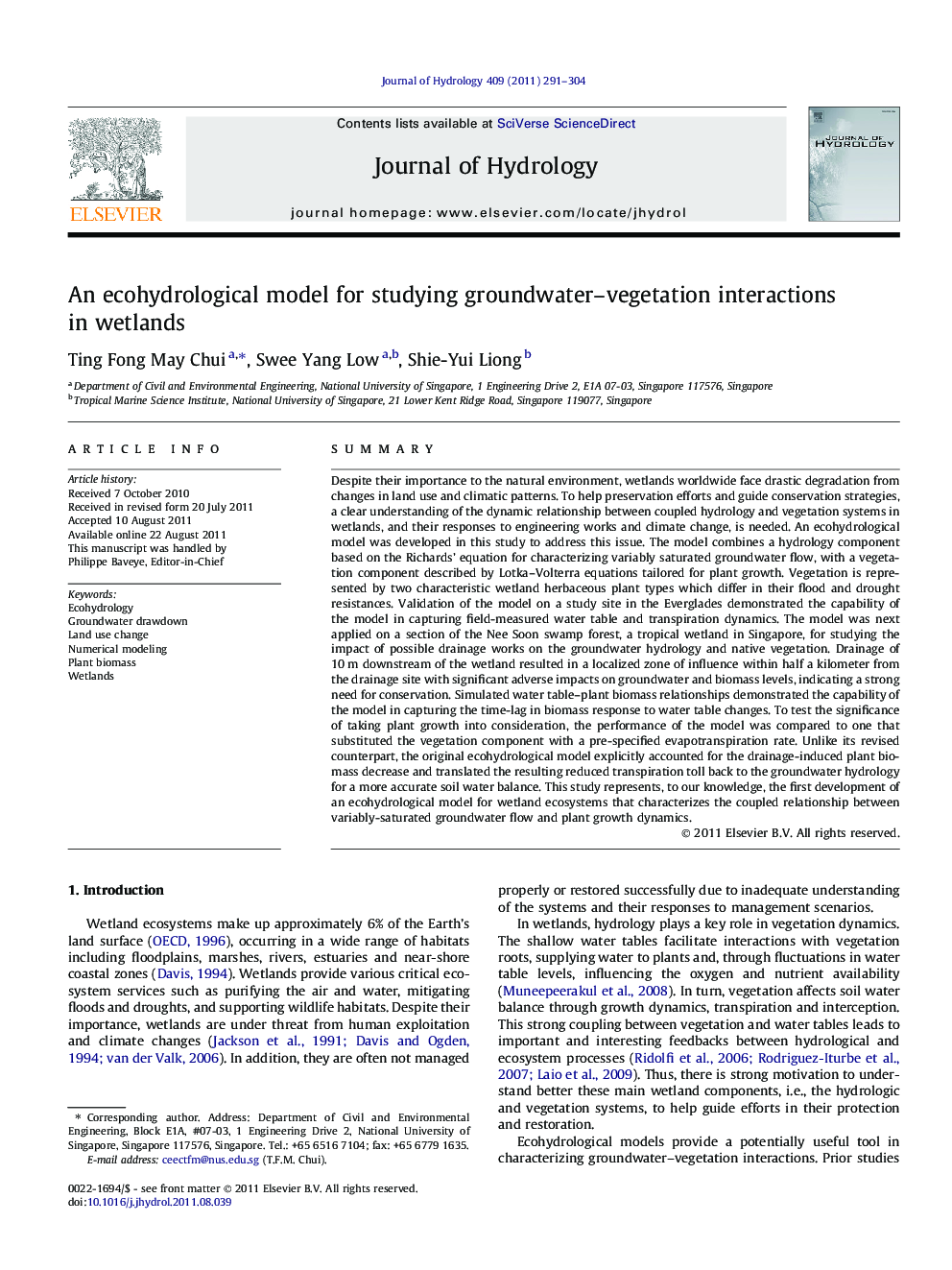| کد مقاله | کد نشریه | سال انتشار | مقاله انگلیسی | نسخه تمام متن |
|---|---|---|---|---|
| 4577490 | 1630011 | 2011 | 14 صفحه PDF | دانلود رایگان |

SummaryDespite their importance to the natural environment, wetlands worldwide face drastic degradation from changes in land use and climatic patterns. To help preservation efforts and guide conservation strategies, a clear understanding of the dynamic relationship between coupled hydrology and vegetation systems in wetlands, and their responses to engineering works and climate change, is needed. An ecohydrological model was developed in this study to address this issue. The model combines a hydrology component based on the Richards’ equation for characterizing variably saturated groundwater flow, with a vegetation component described by Lotka–Volterra equations tailored for plant growth. Vegetation is represented by two characteristic wetland herbaceous plant types which differ in their flood and drought resistances. Validation of the model on a study site in the Everglades demonstrated the capability of the model in capturing field-measured water table and transpiration dynamics. The model was next applied on a section of the Nee Soon swamp forest, a tropical wetland in Singapore, for studying the impact of possible drainage works on the groundwater hydrology and native vegetation. Drainage of 10 m downstream of the wetland resulted in a localized zone of influence within half a kilometer from the drainage site with significant adverse impacts on groundwater and biomass levels, indicating a strong need for conservation. Simulated water table–plant biomass relationships demonstrated the capability of the model in capturing the time-lag in biomass response to water table changes. To test the significance of taking plant growth into consideration, the performance of the model was compared to one that substituted the vegetation component with a pre-specified evapotranspiration rate. Unlike its revised counterpart, the original ecohydrological model explicitly accounted for the drainage-induced plant biomass decrease and translated the resulting reduced transpiration toll back to the groundwater hydrology for a more accurate soil water balance. This study represents, to our knowledge, the first development of an ecohydrological model for wetland ecosystems that characterizes the coupled relationship between variably-saturated groundwater flow and plant growth dynamics.
► Model is developed to couple plant growth with spatially varying groundwater flow.
► Model is validated to capture water table and transpiration dynamics in wetlands.
► Groundwater drawdown results in localized but severe ecohydrological impacts.
► Ecohydrological modeling helps establish water table–plant growth relationships.
► Modeling for plant growth more accurately reflects transpiration toll back to hydrology.
Journal: Journal of Hydrology - Volume 409, Issues 1–2, 28 October 2011, Pages 291–304